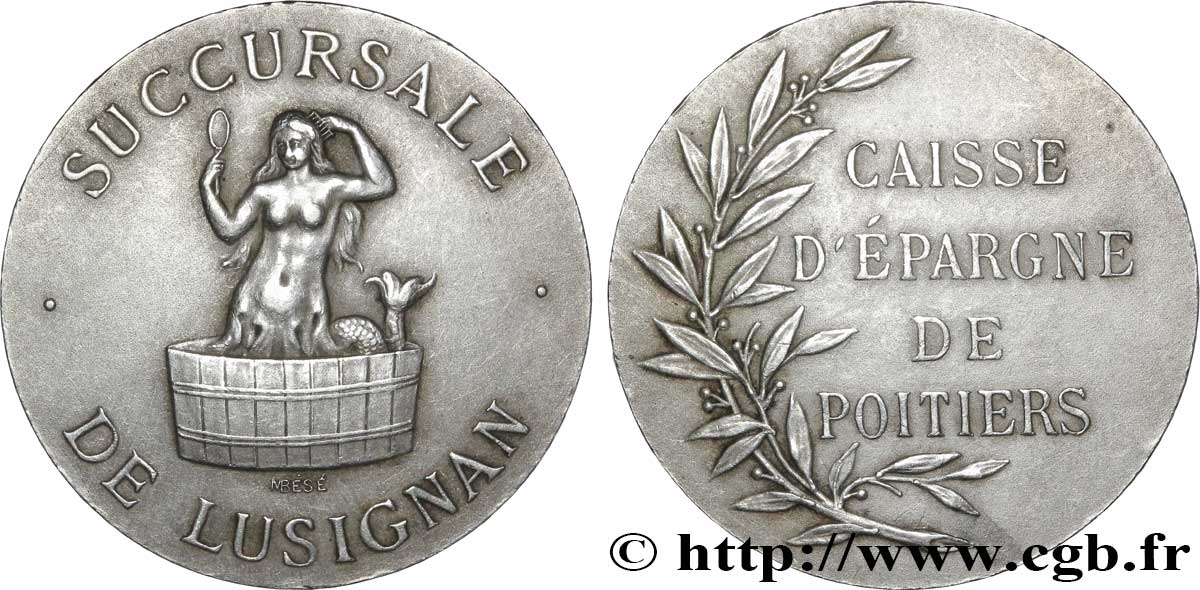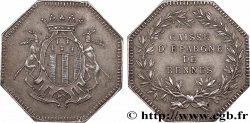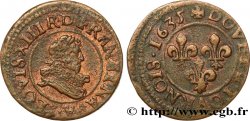E-auction 114-61571 - fjt_324624 - SAVINGS BANKS / CAISSES D'ÉPARGNE CAISSE D'EPARGNE DE POITIERS, Flan mat n.d.
You must signin and be an approved bidder to bid, LOGIN TO BID. Accounts are subject to approval and the approval process takes place within 48 hours. Do not wait until the day a sale closes to register. Clicking on « bid » constitutes acceptance of the terms of use of cgb.fr private e-auctions.
Bids must be placed in whole Euro amounts only. The sale will start closing at the time stated on the item description; any bids received at the site after the closing time will not be executed. Transmission times may vary and bids could be rejected if you wait until the last second. For further information ckeck the E-auctions F.A.Q.
NO BUYER'S FEE.
NO BUYER'S FEE.
| Estimate : | 80 € |
| Price : | 20 € |
| Maximum bid : | 31 € |
| End of the sale : | 22 June 2015 18:49:00 |
| bidders : | 3 bidders |
Type : CAISSE D'EPARGNE DE POITIERS, Flan mat
Date: n.d.
Metal : silver
Diameter : 30 mm
Orientation dies : 12 h.
Edge : lisse
Puncheon : (corne) 1ARGENT
Obverse
Obverse legend : SUCCURSALE DE LUSIGNAN.
Obverse description : La fée Mélusine sortant d’un baquet et se regardant dans un miroir.
Reverse
Reverse legend : CAISSE D'EPARGNE DE POITIERS.
Reverse description : Légende dans le champ accostée d’une branche de laurier.
Commentary
Le type vient du nom des habitants, les mélusins, et de l’histoire de la famille éponyme, les Lusignan, voir https://fr.wikipedia.org/wiki/Lusignan_%28Vienne%29 pour l’histoire de la fée.
Les caisses d'épargne, imaginées au XVIIIe siècle, sont nées au XIXe siècle avec la Révolution industrielle et à la suite d'idées généreuses de protection de l'épargne des salariés et de rendre les économies productives tout en les mettant au service de la Nation. La première caisse d'épargne et de prévoyance est créée à Paris en 1818 puis cet exemple est suivi en province entre 1819 et 1823 à Bordeaux, Rouen, Marseille, Nantes, Brest, Metz, Le Havre, Lyon, Troyes, Reims, etc.. Dans les années 1830-1834, cinquante et une nouvelles caisses d'épargne sont créées tandis qu'en 1835, une loi vient les organiser. De 1835 à 1845, deux cent soixante-trois nouvelles caisses apparaissent, privées ou municipales. En 1870, le territoire compte cinq cent vingt-cinq caisses dont sept hors métropole. Les jetons et médailles des caisses d'épargne servent comme jetons de présence.
The type comes from the name of the inhabitants, the Mélusins, and the history of the eponymous family, the Lusignans, see https://fr.wikipedia.org/wiki/Lusignan_%28Vienne%29 for the history of the fairy. Savings banks, imagined in the 18th century, were born in the 19th century with the Industrial Revolution and following generous ideas of protecting the savings of employees and making savings productive while putting them at the service of the Nation. The first savings and provident fund was created in Paris in 1818 and this example was followed in the provinces between 1819 and 1823 in Bordeaux, Rouen, Marseille, Nantes, Brest, Metz, Le Havre, Lyon, Troyes, Reims, etc. In the years 1830-1834, fifty-one new savings banks were created while in 1835, a law came to organize them. From 1835 to 1845, two hundred and sixty-three new savings banks appeared, both private and municipal. In 1870, the territory had five hundred and twenty-five savings banks, seven of which were outside mainland France. Savings bank tokens and medals served as attendance fees.
Les caisses d'épargne, imaginées au XVIIIe siècle, sont nées au XIXe siècle avec la Révolution industrielle et à la suite d'idées généreuses de protection de l'épargne des salariés et de rendre les économies productives tout en les mettant au service de la Nation. La première caisse d'épargne et de prévoyance est créée à Paris en 1818 puis cet exemple est suivi en province entre 1819 et 1823 à Bordeaux, Rouen, Marseille, Nantes, Brest, Metz, Le Havre, Lyon, Troyes, Reims, etc.. Dans les années 1830-1834, cinquante et une nouvelles caisses d'épargne sont créées tandis qu'en 1835, une loi vient les organiser. De 1835 à 1845, deux cent soixante-trois nouvelles caisses apparaissent, privées ou municipales. En 1870, le territoire compte cinq cent vingt-cinq caisses dont sept hors métropole. Les jetons et médailles des caisses d'épargne servent comme jetons de présence.
The type comes from the name of the inhabitants, the Mélusins, and the history of the eponymous family, the Lusignans, see https://fr.wikipedia.org/wiki/Lusignan_%28Vienne%29 for the history of the fairy. Savings banks, imagined in the 18th century, were born in the 19th century with the Industrial Revolution and following generous ideas of protecting the savings of employees and making savings productive while putting them at the service of the Nation. The first savings and provident fund was created in Paris in 1818 and this example was followed in the provinces between 1819 and 1823 in Bordeaux, Rouen, Marseille, Nantes, Brest, Metz, Le Havre, Lyon, Troyes, Reims, etc. In the years 1830-1834, fifty-one new savings banks were created while in 1835, a law came to organize them. From 1835 to 1845, two hundred and sixty-three new savings banks appeared, both private and municipal. In 1870, the territory had five hundred and twenty-five savings banks, seven of which were outside mainland France. Savings bank tokens and medals served as attendance fees.








 Report a mistake
Report a mistake Print the page
Print the page Share my selection
Share my selection Ask a question
Ask a question Consign / sell
Consign / sell
 Full data
Full data















